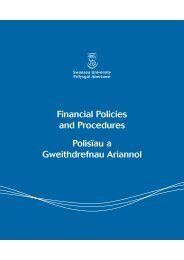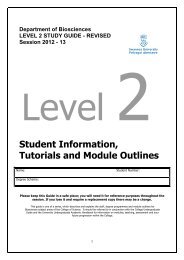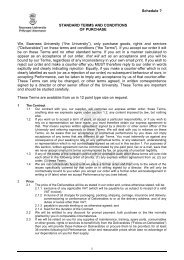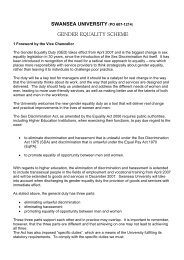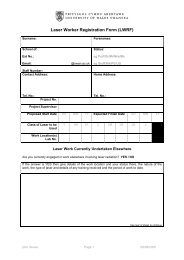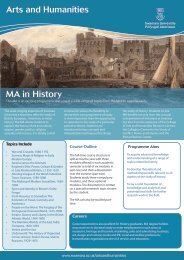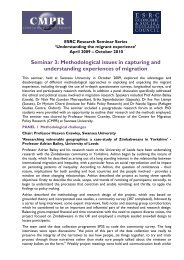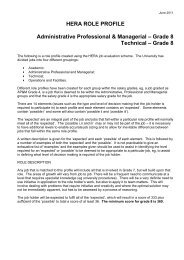Level 0 Study Guide 2012-13 Biosciencex - Swansea University
Level 0 Study Guide 2012-13 Biosciencex - Swansea University
Level 0 Study Guide 2012-13 Biosciencex - Swansea University
Create successful ePaper yourself
Turn your PDF publications into a flip-book with our unique Google optimized e-Paper software.
MODULE CONTENT<br />
INTRODUCTION<br />
A module is a discrete educational component of a programme, which has the following<br />
attributes:<br />
i. specific aims;<br />
ii. a syllabus and a reading list;<br />
iii. a teaching and learning pattern;<br />
iv. an assessment method;<br />
v. learning outcomes.<br />
In addition, each module:<br />
a. is assigned a unique reference number;<br />
b. is assigned to a level of study which reflects the academic standard of a module and its<br />
learning outcomes;<br />
c. may have pre-requisites and/or co-requisites;<br />
d. may/may not be compatible with each other.<br />
Each module is allocated a credit weighting, and full-time students are expected to pursue 120<br />
credit points (60 ECTS credits) in the academic year. Part-time students are expected to pursue<br />
60 credits (30 ECTS credits).<br />
[ECTS (the European Credit Transfer System) is a widely recognised system of credit<br />
accumulation for regular study periods. It aims to facilitate recognition of study periods<br />
undertaken abroad by mobile students through the transfer of credits. The system is based on<br />
the convention that 60 credits measure the workload of a full-time student during one academic<br />
year.]<br />
TEACHING METHODS<br />
Modules may be delivered by a variety of methods, e.g. lectures, academic tutorials, laboratory<br />
or field work, projects and assessed coursework. The module information sheets, specific to<br />
each of your modules, will give information on how the module is assessed, contact hours and<br />
any suggested reading matter. Students are normally required to attend all lectures, laboratory<br />
and other practical sessions, tutorials and any other planned or timetabled element of your<br />
course. Attendance at teaching sessions is recorded and monitored.<br />
Lectures<br />
The purpose of lectures is to provide a framework within which information and ideas are<br />
studied. They will contain factual information, discussion of alternative views on the subject and<br />
analysis of the issues. Lectures last approximately 50 minutes and attendance is expected<br />
since they form the core of School teaching. Students must not assume that all topics relevant<br />
to the module will be covered in detail in lectures; directed reading and independent study are<br />
also important.<br />
All lecturers are expected to post material on “Blackboard” – as a miniumum you can expect the<br />
module handbook, a statement of assessment and at least one past exam paper to be available<br />
for each of your modules on the Blackboard site. Most lecturers post lecture material on<br />
Blackboard. Timetables will be distributed during registration and enrolment and are posted on<br />
subject area notice boards and are available on the College of Science website.<br />
16




